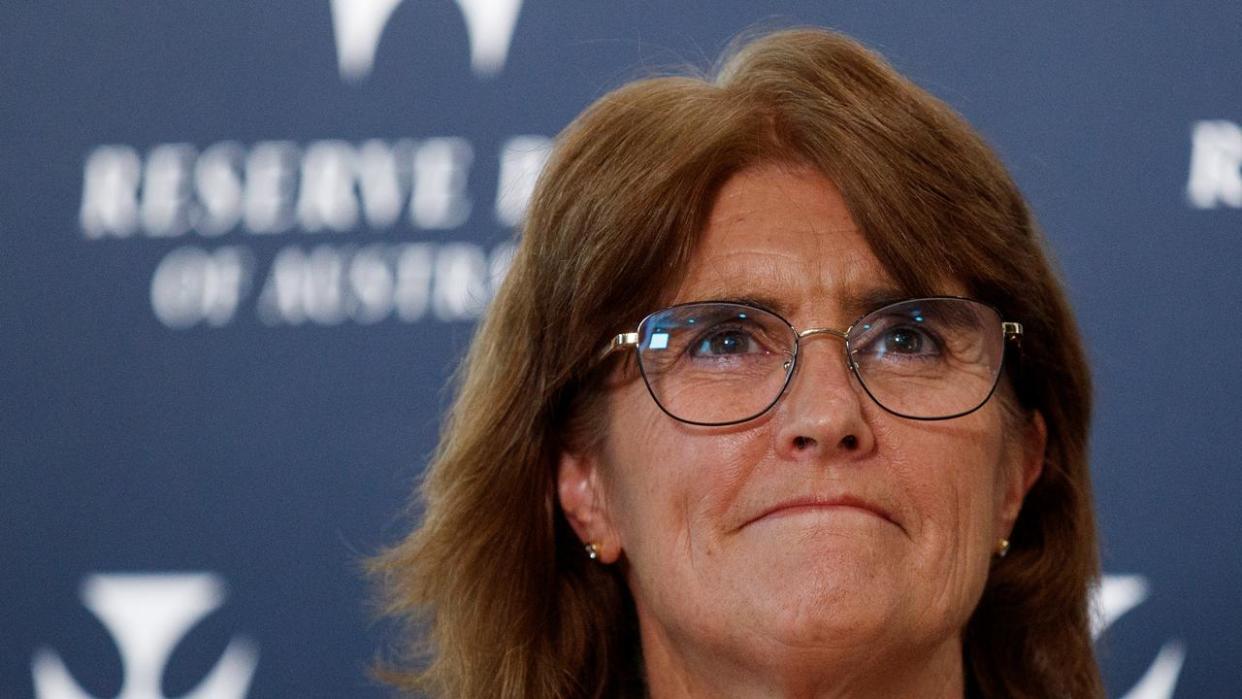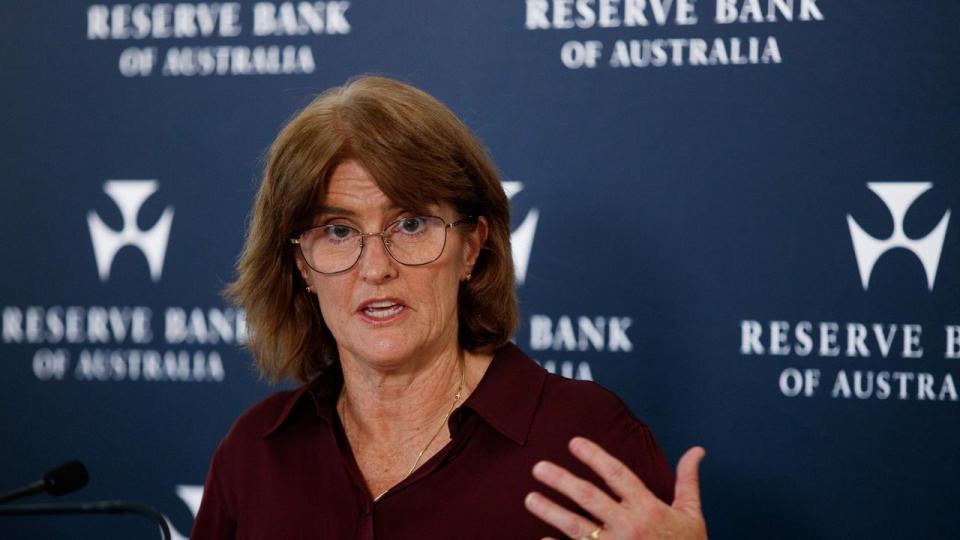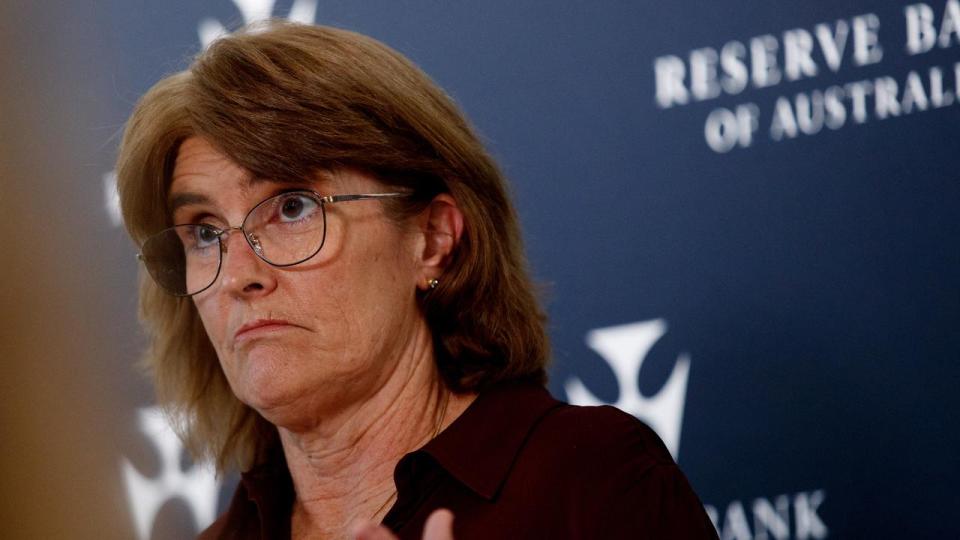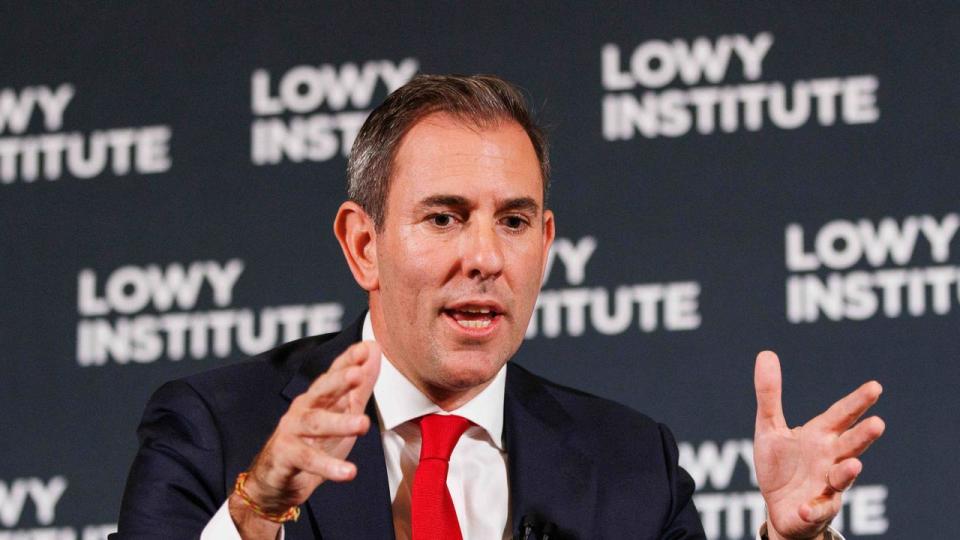Rate hikes back on the table: Bullock

The Reserve Bank has put rate hikes back on the table, with the board considering an increase at its May meeting, before ultimately choosing to give cash-strapped household borrowers a respite.
In a move that was widely anticipated by economists and markets, the RBA board on Tuesday kept the cash rate on a 12-year high of 4.35 per cent.
But at the post meeting press conference, Governor Michele Bullock revealed the board discussed the case for a rate hike, an option that was off the agenda at its previous meeting in March.
“On balance, the board felt that at the moment rates staying where they are was appropriate,” Ms Bullock told reporters in Sydney.

The RBA governor warned that while inflation was easing, it was falling more gradually than had been previously expected.
“Getting inflation back to target will take time and I think the path will likely continue to be bumpy, we should all be prepared for that,” Ms Bullock added.
Fresh staff forecasts simultaneously released by the RBA, showed the central bank upgraded its near term inflation predictions, fuelled by rebound prices at the petrol bowser and continued tightness in the jobs market.
With inflation expected to rebound further, Ms Bullock said the central bank would not hesitate to impart a further increase to interest rates should price pressures continue to prove more stubborn than expected.
“We don’t think we necessarily have to tighten again – but we can’t rule it out. If we have to, we will,” Ms Bullock said.
“If we really think that inflation is going to be persistent and significantly above our forecast we will tighten again.”
However, ANZ head of Australian economics Adam Boyton said the threshold needed for a further hike was likely higher than anticipated.
“The combination of the less hawkish than expected language in the post‑meeting statement and the larger than expected upward revisions to the RBA’s inflation forecasts over the next few quarters implies the hurdle to another hike could be higher than markets have been expecting,” Mr Boyton said.
AMP chief economist Shane Oliver agreed the RBA was unlikely to resume its hiking cycle, pointing to continued weakness in consumption.
“Retail sales and household spending data indicate that consumer spending remains very weak under the impact of high rates and cost of living pressures,” Dr Oliver said.
“There is no sign of any significant upswing in the economy let alone overheating that may require further rate hikes.”

Asked if the federal and state budgets risked undermining the RBA’s inflation fighting efforts, Ms Bullock said treasurers across the country were aware of exacerbating price pressures.
“They want to help us beat inflation so they don’t want to try and add to inflationary pressures,” she said.
“We’ll just have to see what the budget comes out like and then we can think about how that might impact our forecasts.”
KPMG chief economist Brendan Rynne said monetary policy could only do so much heavy lifting, and the onus was now on Treasurer Jim Chalmers to hand down a budget that would not to add to demand.
“It should be neutral, or if possible, even slightly contractionary,” Dr Rynne said.
“A budget in expansion mode will risk inflation taking off, with fiscal policy pressing even harder on the accelerator, while monetary policy is pushing on the brakes.”

Responding to the interest date decision, Treasurer Jim Chalmers said the May budget in a week’s time would complement the RBA’s inflation fighting efforts.
“The May budget will be carefully calibrated to the economic circumstances, striking the right balance between getting inflation under control, easing cost-of-living pressures, supporting sustainable growth and building fiscal buffers in an uncertain global environment,” Dr Chalmers said.
The opposition and some economists have called on the Albanese government to clamp down on spending, demanding further fiscal restraint to take further pressure off the RBA.
Over the past two years, the RBA has ratcheted up borrowing costs in an attempt to slow the economy and return still elevated price pressures to its 2 to 3 per cent target band.
But since November last year, the central bank board has maintained a holding pattern, awaiting further evidence that its aggressive run of 13 rate hikes since May 2022 are working to slow the economy and tame inflation as intended.
Following its run of rate hikes, inflation has retreated since its 32-year high, with headline inflation easing to 3.6 per cent in the year to March, well below its peak of 7.8 per cent in December 2022.

 Yahoo Lifestyle
Yahoo Lifestyle 
